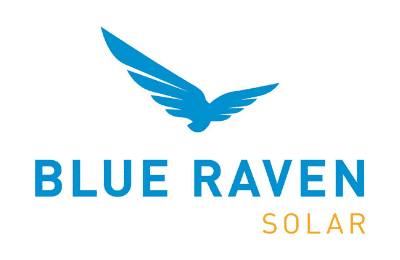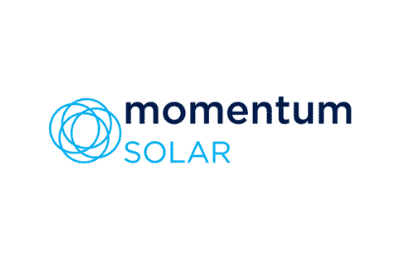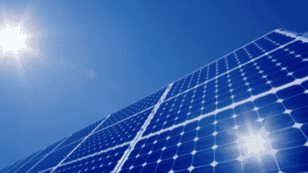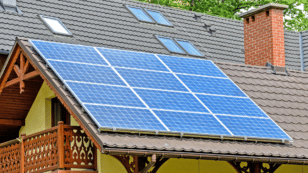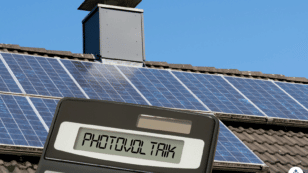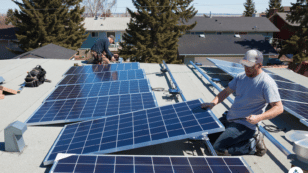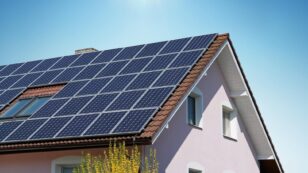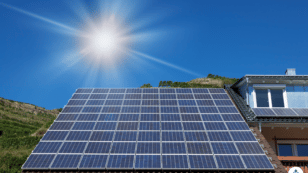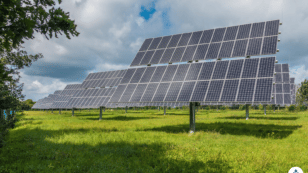 Reviews
Reviews
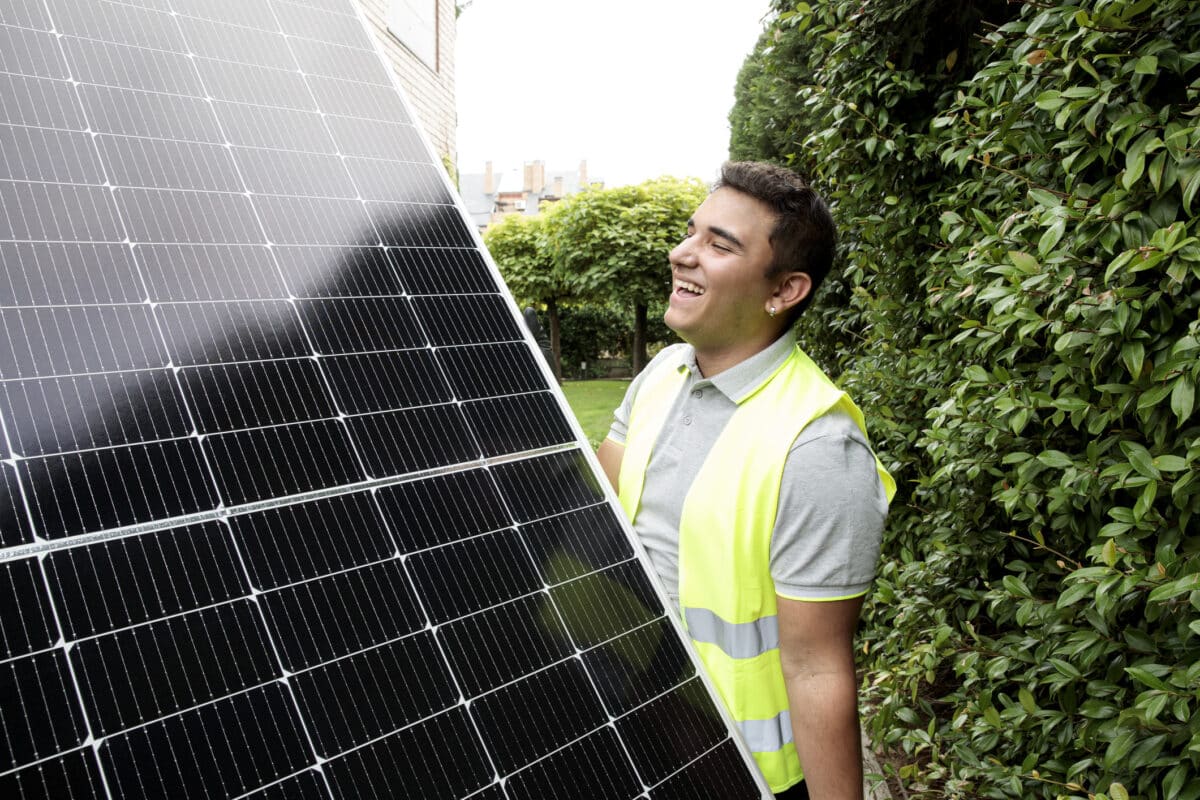
Solar Panel Cost In 2024 (Homeowner's Installation Savings Guide)
In this EcoWatch guide on solar panel costs, you’ll learn:
- What the average solar pv costs are
- What the 5 contributing factors of solar costs are
- Which states have the best solar prices
- Which solar financing options are the best
EcoWatch guide has helped thousands of homeowners save time and money when going solar by breaking down exactly what they need to know in 2024.
Each product and or company featured here has been independently selected by the writer. You can learn more about our review methodology here. If you make a purchase using the links included, we may earn commission.
What is the All-In Price to Install Solar Panels?
Even though the average cost of solar panels has dropped 80% in the last decade, the upfront cost is still significant. When selecting the best solar company for your home installation, price is one of the largest factors.
To answer this question, let’s take a look at the basic price range for solar panel installations. The average cost for solar equipment in the U.S., based on our analysis, is around $3.33 per watt.
To put this in perspective, this means that after the 30% federal tax credit is applied, a 5-kW system would cost $11,655 and a 10-kW system would cost $23,310. An average residential solar system would sit somewhere between those figures.
Next, you might rightly wonder: What exactly am I paying for? The solar panels themselves usually make up just about a quarter of the total system cost. Remaining expenses include labor costs, solar maintenance and additional parts and equipment (such as inverters, racking, wiring, electric vehicle chargers or batteries).
Cost of Solar Panel Maintenance
In general, solar systems are designed to run smoothly for decades without requiring much maintenance or upkeep. However, even the best systems require routine solar panel cleaning and checkups as grime, dirt and debris can accumulate over the solar cells.
Any sizable costs associated with malfunctioning panels should be covered by your panels’ warranty, but it’s not a bad idea to factor in the costs of a simple few cleanings and occasional maintenance.

Blue Raven Solar
Pros
- Industry-leading in-house financing
- Competitive pricing
- Excellent reputation
Cons
- Doesn't offer solar batteries (coming 2022)

Momentum Solar
Pros
- Great warranty coverage
- Concierge service ensures steady communication
- Representatives are experts on local policies
Cons
- Slightly limited service offerings
- Only available in 11 states

Blue Raven Solar
Pros
- Industry-leading in-house financing
- Competitive pricing
- Excellent reputation
Cons
- Doesn't offer solar batteries (coming 2022)
What Solar Financing Options are Available?
Different solar installers may offer different financing plans, allowing you some flexibility. With that said, there are three standard options for paying for your solar energy system:
-
- Purchase your solar energy system outright (that is, pay in cash).
-
- Take out a solar loan to purchase the system, then pay it back with interest.
-
- Lease your solar system; you will pay less month to month but won’t actually own the system yourself.
- Take on a solar PPA, simialr to a lease but you don’t own any of the system but benefit from solar energy it creates at a small cost.
Our solar financing guide breaks down each of these options to help you make the decision that best fits your needs and our solar leasing vs buying guide can help you decided if either of those options is right for your solar needs.
How to Find the Lowest-Price Solar Panels?
Again, the best way to assess the cost of solar is to get a quote from a certified installer near you. In addition to receiving an installation price, you can learn your estimated 25-year energy costs, how compatible your home is for solar and even compare quotes to find the best offer. The simple process of getting quotes from multiple providers can save you thousands in the long run.
What Are the 5 Key Factors of the Price of Solar Panels?
There are a few key factors that lead to variation in solar installation costs. Understanding these can help you decide whether solar panels are worth the investment for your home. Let’s take a look at them in more detail.
System Size Needs
The size of your residential solar system will depend primarily on the amount of electricity you currently use. You can roughly estimate how many photovoltaic (PV) solar panels you’ll need based on past utility bills, your available roof space and the amount of sunlight in your area, but to get an accurate system size, you’ll need a consultation with a local solar provider.
Your installer will evaluate your home energy needs based on irradiance maps, energy bills, satellite imagery of your roof, your utility company and more. It can then recommend a custom solar panel system size to accommodate your energy needs. The larger the system, the more expensive it will be.
Type of Solar Panels and Other Equipment Costs
There are three basic types of solar panels, two of which are commonly used residentially: monocrystalline and polycrystalline panels. Monocrystalline panels tend to be more energy-efficient, which can lead to greater savings in the long run, but they’re also a bit pricier on the front end.
That being said, solar panel efficiency is the name of the game for most homeowners who aim to install a system on their roof, as they’ll likely have less space to work with than commercial solar projects or ground-mounted solar panel systems will.
Other components you may need to purchase include inverters, wiring, charge controllers, mounts, solar batteries and more. Consider how much backup power is a priority for your home – backup batteries will add some costs on the front end, but additional safety and savings on the back.
Geographic Location
Another factor that can have a big impact on solar pricing? Where you live. Unsurprisingly, solar installation tends to be most cost-effective in parts of the country that get a lot of sun exposure, and therefore more energy to convert into electricity. This basically means that solar panels will operate more efficiently and, in many cases, means that you’ll need fewer panels overall to power your home.
Those who live in states like California, Florida and Arizona — or really any areas of the Sun Belt or Southwest — will likely get the most out of their home solar power systems. Other factors like the direction of your home and how much shade your house gets will also impact your home’s sun exposure, and therefore the efficiency of your system. Also, keep in mind that the further your company is from your home, the more expensive the overall installation will be. Find your state in our hub for solar panels installation guides where we detail the 7 steps to installing solar panels in your state.
Solar Incentives
Both state and federal governments have established incentive programs to encourage homeowners to buy solar panels. There is currently a 30% federal solar tax credit, called the Solar Investment Tax Credit (ITC), available for homeowners who install residential solar panels through 2032. It is scheduled to reduce to 26% in 2033 and 22% in 2034 before expiring in 2035.
Your solar system cost will also depend on the net metering policy of your local utility company. Most utilities vary in their buyback rates and feed-in tariffs, but policies can have a big effect on the overall value from your solar system and your solar payback period. Be sure to ask your solar installation company about how cooperative your utility provider is with solar energy installations.
State incentives, rebates, and solar tax exemptions can certainly vary based on where you live, but most solar panel installers should help you identify and apply for the programs in your area. However, it’s still a good idea to familiarize yourself with the local incentives that might be available to you.
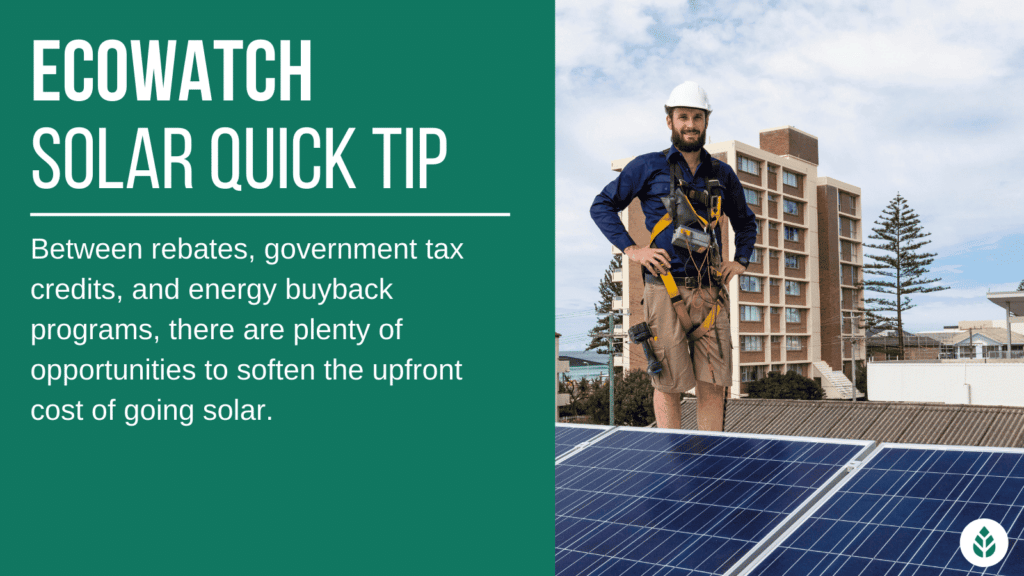
Additional Factors of Solar Panel Installation Prices
There are plenty of other factors that can impact solar panel installation costs. These include (but are not limited to):
-
- The availability of solar panels in your area
-
- Your monthly electricity bill/energy usage
-
- The current cost of shipping
-
- The number of providers competing for your business
-
- Supply chain issues
-
- Local electricity rates
The bottom line? You can learn the most by shopping around. Get a few different proposals from local companies, evaluate what services you might be interested in and ask about sales or specials. Familiarize yourself with the best brands of affordable solar panels if budget is your priority.
Make the Best Choice About Solar Energy
Solar energy is not right for every homeowner, nor for every home. With that said, many homeowners will find that the total cost of solar is more than offset by long-term, recurring energy savings that provide a sizable return on investment. Make sure you factor in cost, energy needs, tax incentives, home value, energy storage options, and more as you seek to make a fully informed decision about whether to make the switch to renewable energy with solar.
Which States Have the Best Solar Panel Costs?
One of the broadest ways to gauge the overall cost of solar is by looking at the average price of solar panels by state. Our statewide average prices are calculated using market research and data from top brands. These prices can help convey a better understanding of what solar might cost in your area.
| Average Cost of Solar By State | Average Cost of Solar Per Watt | Average Cost of a 5 kW System After 30% Tax Credit* |
| Alabama | $3.72 | $13,020.00 |
| Alaska | $3.13 | $10,955.00 |
| Arizona | $3.01 | $10,535.00 |
| Arkansas | $3.17 | $11,095.00 |
| California | $3.33 | $11,655.00 |
| Colorado | $3.52 | $12,320.00 |
| Connecticut | $3.49 | $12,215.00 |
| Delaware | $3.06 | $10,710.00 |
| Washington, DC | $2.28 | $7,980.00 |
| Florida | $3.04 | $10,640.00 |
| Georgia | $3.29 | $11,515.00 |
| Hawaii | $3.39 | $11,865.00 |
| Idaho | $3.26 | $11,410.00 |
| Illinois | $3.44 | $12,040.00 |
| Indiana | $3.66 | $12,810.00 |
| Iowa | $3.67 | $12,845.00 |
| Kansas | $3.20 | $11,200.00 |
| Kentucky | $3.06 | $10,710.00 |
| Louisiana | $3.39 | $11,865.00 |
| Maine | $3.64 | $12,740.00 |
| Maryland | $3.37 | $11,795.00 |
| Massachusetts | $3.72 | $13,020.00 |
| Michigan | $3.62 | $12,670.00 |
| Minnesota | $3.60 | $12,600.00 |
| Mississippi | $3.27 | $11,445.00 |
| Missouri | $3.12 | $10,920.00 |
| Montana | $3.22 | $11,270.00 |
| Nebraska | $3.55 | $12,425.00 |
| Nevada | $3.04 | $10,640.00 |
| New Hampshire | $3.77 | $13,195.00 |
| New Jersey | $3.37 | $11,795.00 |
| New Mexico | $3.45 | $12,075.00 |
| New York | $3.52 | $12,320.00 |
| North Carolina | $3.21 | $11,235.00 |
| North Dakota | $3.14 | $10,990.00 |
| Ohio | $3.19 | $11,165.00 |
| Oklahoma | $3.34 | $11,690.00 |
| Oregon | $3.28 | $11,480.00 |
| Pennsylvania | $3.26 | $11,410.00 |
| Rhode Island | $3.68 | $12,880.00 |
| South Carolina | $3.27 | $11,445.00 |
| South Dakota | $3.11 | $10,885.00 |
| Tennessee | $3.21 | $11,235.00 |
| Texas | $3.18 | $11,130.00 |
| Utah | $3.15 | $11,025.00 |
| Vermont | $3.59 | $12,565.00 |
| Virginia | $3.35 | $11,725.00 |
| Washington | $3.36 | $11,760.00 |
| West Virginia | $3.36 | $11,760.00 |
| Wisconsin | $3.32 | $11,620.00 |
| Wyoming | $3.29 | $11,515.00 |
Keep in mind that 5 kW is a baseline size and near the smaller end of most solar panel installations. Larger homes may require 6 kW systems, or larger.
The cost information presented in this article is derived from a comprehensive analysis, incorporating data from multiple industry sources. The average cost per watt per state was calculated based on figures from Consumer Affairs, Energy Sage, and Berkeley Lab’s Electricity Markets & Policy Department. Additionally, monthly energy consumption and the average monthly cost of electricity were sourced from the U.S. Energy Information Administration, ensuring a well-rounded and accurate representation of the information presented.
Solar Panel Costs FAQ's
Your solar energy system is an asset just like any other, and when installed on your home, solar increases your property value accordingly. In fact, the U.S. Department of Energy has reported buyers are willing to pay an average premium of about $15,000 for a home with a solar panel system.
With that said, you are only going to see your property values go up if you own your solar system outright, as opposed to leasing it. The cost of electricity in your area as well as the net metering policy of your local utility will also impact the overall value of your solar energy system.
It all depends on your motivation for going solar. If you want to maximize long-term savings and increase the value of your home, then purchasing your solar system is best. However, if you just want a low-maintenance way to reduce monthly energy costs and practice environmental stewardship, then a solar lease might be a better option.
Also, note that leasing can be a good option for those who might plan on selling their home in the short term. Leasing panels does not make you eligible for the solar tax credit.
Solar systems are designed to be exceptionally durable. With just the most basic upkeep, most solar energy systems should continue to work and produce power for anywhere from 25 to 35 years. Standard warranties for panels typically last around 25 years.
Solar Panel Costs By States
- Cost of Solar Panels in Alabama
- Cost of Solar Panels in Alaska
- Cost of Solar Panels in Arizona
- Cost of Solar Panels in Arkansas
- Cost of Solar Panels in California
- Cost of Solar Panels in Colorado
- Cost of Solar Panels inConnecticut
- Cost of Solar Panels in Delaware
- Cost of Solar Panels in Florida
- Cost of Solar Panels in Georgia
- Cost of Solar Panels in Hawaii
- Cost of Solar Panels in Idaho
- Cost of Solar Panels in Illinois
- Cost of Solar Panels in Indiana
- Cost of Solar Panels in Iowa
- Cost of Solar Panels in Kansas
- Cost of Solar Panels in Kentucky
- Cost of solar panels in Louisiana
- Cost of Solar Panels in Maine
- Cost of Solar Panels in Maryland
- Cost of Solar Panels in Massachusetts
- Cost of Solar Panels in Michigan
- Cost of Solar Panels in Minnesota
- Cost of Solar Panels in Mississippi
- Cost of Solar Panels in Missouri
- Cost of Solar Panels in Montana
- Cost of Solar Panels in Nebraska
- Cost of Solar Panels in Nevada
- Cost of Solar Panels in New Hampshire
- Cost of Solar Panels in New Jersey
- Cost of Solar Panels in New Mexico
- Cost of Solar Panels in New York
- Cost of Solar Panels in North Carolina
- Cost of Solar Panels in North Dakota
- Cost of Solar Panels in Ohio
- Cost of Solar Panels in Oklahoma
- Cost of Solar Panels in Oregon
- Cost of Solar Panels in Pennsylvania
- Cost of Solar Panels in Rhode Island
- Cost of Solar Panels in South Carolina
- Cost of solar panels in South Dakota
- Cost of Solar Panels in Tennessee
- Cost of Solar Panels in Texas
- Cost of Solar Panels in Utah
- Cost of Solar Panels in Vermont
- Cost of Solar Panels in Virginia
- Cost of Solar Panels in Washington
- Cost of Solar Panels in West Virginia
- Cost of Solar Panels in Wisconsin
- Cost of Solar Panels in Wyoming
Comparing authorized solar partners
-
- Industry-leading in-house financing
- Competitive pricing
- Excellent reputation
- Doesn't offer solar batteries (coming 2022)
A+Best Solar Financing2014Trina Solar, Canadian Solar, SolarEdge, Silfab, SunPower25-year manufacturer warranty; 10-year workmanship warranty, 2-year production guarantee
Having trouble deciding? Click below and use our process to receive multiple quotes instead:

 233k
233k  41k
41k  Subscribe
Subscribe 
